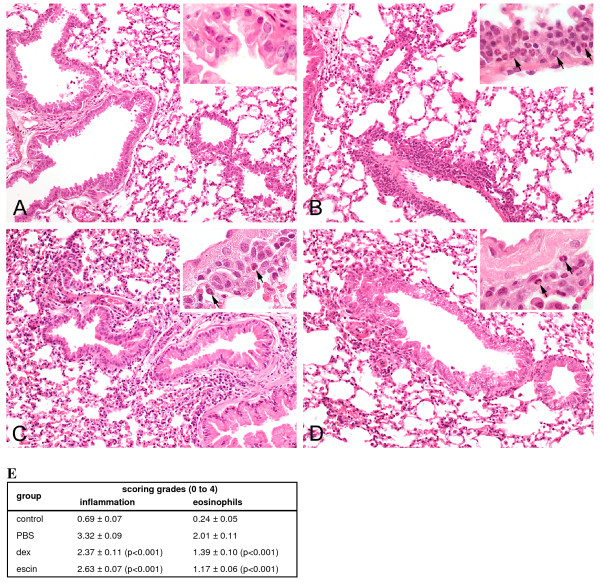Figure 5.
Beta-escin reduces inflammation and eosinophilia in lungs of mice from the allergic airway inflammation model. Representative photomicrographs in a 20 and 60 times magnification (inset) of H&E stained lung sections from 40 h after the last challenge show the lung parenchyma and the peribronchial and perivascular infiltration of inflammatory cells from (A) PBS-challenged mice treated with PBS (negative control); (B) OVA-challenged mice treated with PBS (= positive control); (C) OVA-challenged mice treated with dexamethasone (1 mg/kg, once a day) and (D) OVA-challenged mice treated with beta-escin (3 mg/kg, twice a day). The arrows indicate representative eosinophils in the infiltrate. (E) Semi-quantitative analyses of peribronchial and perivascular inflammatory cells and percentage of eosinophils in lung sections were performed with a scoring system. Each value represents the mean of 13 - 21 mice from 4 independent, but identical experiments ± SEM out of a series of similar experiments. Significant differences of the dex and escin groups to the PBS group are indicated in brackets.

